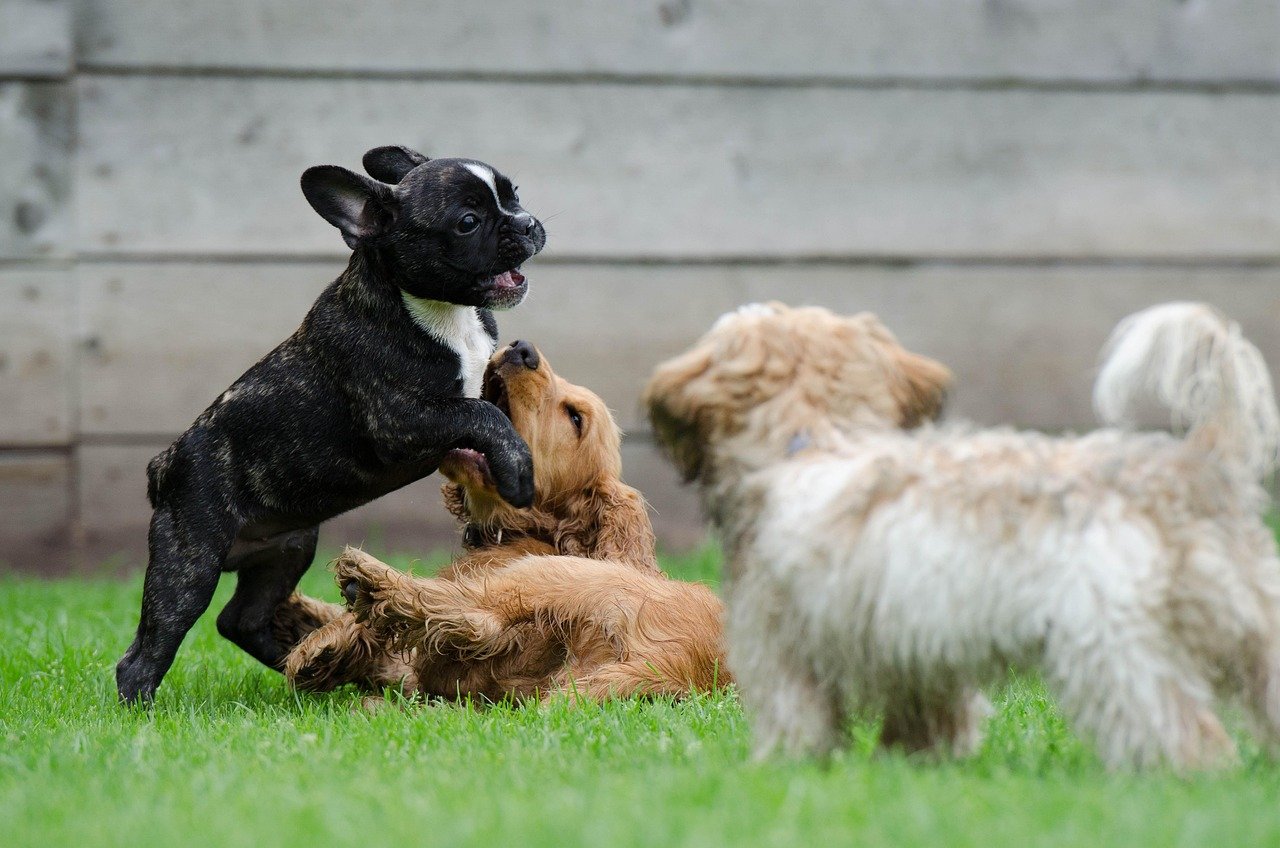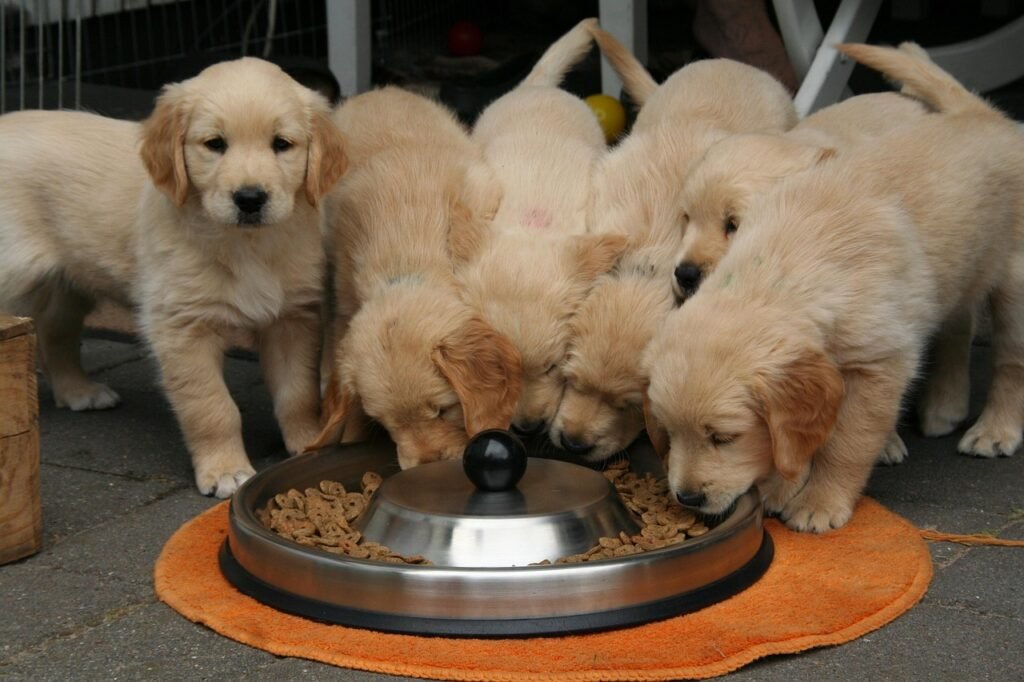
We always hear that puppy socialization is essential, but why is that? Below is an extremely simplified explanation of what might happen if a puppy is not socialized during his critical period.
We know that the critical period for socializing a puppy typically falls between 4 and 16 weeks of age. This timeframe is essential for developing resilience to fear and establishing lifelong emotional health. During this period, puppies are more receptive to new people, places, sounds, experiences and more. Providing safe, positive exposure to anything and everything you would like a puppy to cope with later in life during this time helps reduce the likelihood of developing fear-based behaviours later. Understanding and supporting puppies during this critical time helps prevent lifelong fear and will create a more confident, happy dog.
When puppies do not receive enough safe exposure to the world, the consequences often manifest later in life. Adult dogs that were not socialised may become fearful or aggressive, particularly in new situations. They might startle easily, exhibit avoidance behaviours, or even develop phobias. This can make everyday activities—such as vet visits or greeting visitors—much more challenging for both the dog and the owner.
It, however, is not hopeless. Puppies who were never socialised during their critical period will need to learn that the world is not a bad place and then learn to make new positive associations with everything they are fearful of. That process is called desensitisation and counterconditioning. Success, however, will depend on the individual dog, his genetic makeup, previous learning opportunities, his environment, and more.

One word that stands out is fear. Likely, a puppy who has not been socialised will later become fearful of certain situations, other animals, objects, sounds, or certain people. We often see this in single sex couples. A puppy who grew up with only women might be suspicious of men, and a puppy who grew up with single sex men might look at women with suspicion.
So, what is fear? Researchers take a neurobiological approach to studying fear in dogs by examining both the brain and body. This involves investigating how the brain’s structures interact, how signals are transmitted throughout the body, and how various chemicals influence these processes, either helping or hindering them.
Let us get technical and take a look at the brain regions involved in fear processing.
The Amygdala: This structure plays a role in emotional processing and regulation of fear, aggression, and anxiety. It allows quick responses when a dog encounters something he might perceive as dangerous.
The Hippocampus: This structure allows the puppy to learn which situations are scary and remember these encounters. It is basically responsible for forming memories and is involved in emotional processing.
The Hypothalamus: This structure is involved in hormone production, and it regulates various bodily functions. When a dog encounters something scary, this part of the brain will trigger the sympathetic nervous system by sending signals to the adrenal glands. This will release adrenaline into the bloodstream, activating the dog’s 5F system, also known as the “fight or flight” response, and preparing the dog to survive a real or perceived threat. He will experience an increase in heart rate to improve oxygen delivery to other parts of the body, and his pupils will dilate to improve vision. His digestive system will slow down, so energy can be diverted to other organs. Energy storage regions in the dog’s liver will be activated to supply a boost of energy.

The sympathetic nervous system is a vital component of the autonomic nervous system, responsible for orchestrating the body’s ‘fight or flight’ response in stressful situations. It communicates via specific chemicals called neurotransmitters.
The primary neurotransmitters involved in this process are norepinephrine, epinephrine, and acetylcholine.
Norepinephrine, also known as noradrenaline, primarily increases heart rate and blood pressure, preparing the body for rapid action. Epinephrine, commonly known as adrenaline, plays a similar role but exerts a broader range of effects, including enhancing energy availability and improving blood flow to muscles. Acetylcholine is also crucial, particularly in transmitting signals between nerve cells and stimulating muscle contractions.
Cortisol, often referred to as the primary “stress hormone,” increases significantly during periods of fear. Norepinephrine and adrenaline drive the classic “fight-or-flight” response, enabling dogs to react quickly to threats. On the other hand, serotonin, dopamine, and oxytocin play key roles in balancing emotions and fostering social comfort, sometimes helping to ease fear when a trusted person is nearby, which is why comforting a dog is not a bad thing at all during a stressful event. Collectively, these neurotransmitters enable quick responses to perceived threats, allowing the body to react swiftly to challenges.
The sympathetic and parasympathetic nervous systems have opposing functions. The sympathetic nervous system sends signals that alert your body’s systems, preparing them for action, while the parasympathetic nervous system sends signals that help relax those systems. These two systems work together to maintain balance in your body. The sympathetic nervous system takes charge during times of danger. Once the threat has passed, the parasympathetic nervous system steps in to help everything return to normal, also known as the “rest and digest” state.

So, what does all this have to do with socialization? It has everything to do with it. During the socialization process, it is advisable to avoid using punitive house training or general training methods. Young puppies are highly susceptible to both positive and negative experiences and using harsh techniques can lead to a fearful dog who may remain anxious for the rest of his life.
When puppies undergo neglect, trauma, or stress during their critical early weeks of development, the repercussions can be significant and long-lasting. This sensitive period is essential for shaping their emotional and behavioural responses, and negative experiences during this time can interfere with the brain circuits that process fear. Notably, areas such as the amygdala, which plays a key role in emotional regulation, and the prefrontal cortex, which is crucial for decision-making and impulse control, may be particularly affected.
As a result of these disruptions, puppies may develop increased stress sensitivity as they grow. Those who are exposed to frightening situations or deprived of essential social interactions during these formative weeks may mature into adults who are more anxious, reactive, or fearful.
The impact of these early experiences goes deep, influencing not only their behaviour but also fundamentally altering their biology; this includes epigenetic modifications at the genetic level, in which certain genes may be turned on or off in response to their environment. These lasting effects underscore the importance of a nurturing and supportive environment during a puppy’s early development.
I hope this explains the importance of early socialisation better. Do you need to join a socialization class? No, not really. If you know how to socialise a puppy and what to socialise him with, you can easily do it yourself. A puppy class is there to teach you how to communicate with your puppy in a positive way, while also providing as many positive experiences with other dogs/puppies as well.
Confidence-building, bonding with your puppy, and simple fun exercises like come when called, sit and lie down on cue, and a few other skills are usually part of a puppy class. Still, the main aim of a well-run puppy class is to avoid a puppy becoming a fearful, reactive dog later in life.

Yes, we are open all-day Saturday from 08:00 – 17:00 and we are on-call 24/7 on 072 088 1957.
Yes, we have qualified veterinary nurses looking after our patients all night with veterinary oversight as needed.
Yes, we can arrange all sorts of advanced imaging here on-site and we also travel with patients to human facilities when required.
Yes, we have a separate ward for cats to minimize their stress in hospital. We also make use of pheromone products to reduce stress in hospital.
We do offer monthly repayments via FLOAT whereby we use existing credit card credit to pay your account off at zero % interest.

Yes, we are open all-day Saturday from 08:00 – 17:00 and we are on-call 24/7 on 072 088 1957.
Yes, we have qualified veterinary nurses looking after our patients all night with veterinary oversight as needed.
Yes, we can arrange all sorts of advanced imaging here on-site and we also travel with patients to human facilities when required.
Yes, we have a separate ward for cats to minimize their stress in hospital. We also make use of pheromone products to reduce stress in hospital.
We do offer monthly repayments via FLOAT whereby we use existing credit card credit to pay your account off at zero % interest.